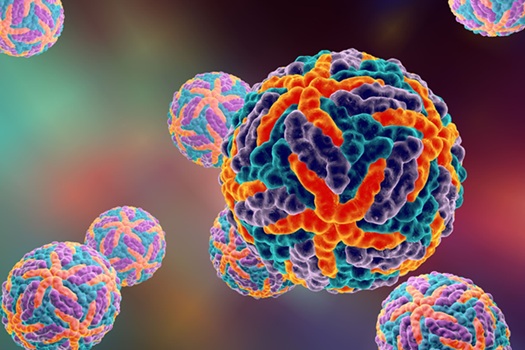Nanoparticle Carries Imaging and Medicinal Components
|
By LabMedica International staff writers Posted on 11 Sep 2008 |
Ultra-miniature bialy-shaped particles--called nanobialys because they resemble tiny versions of the flat, onion-topped rolls popular in New York City--could soon be carrying medicinal compounds through patients' bloodstreams to fight tumors or atherosclerotic plaques.
The nanobialys are an important addition to the range of diagnostic and disease-fighting nanoparticles developed by researchers from the Consortium for Translational Research in Advanced Imaging and Nanomedicine (C-TRAIN) at Washington University School of Medicine in St. Louis (MO, USA). C-TRAIN's "smart” nanoparticles can deliver drugs and imaging agents directly to the site of tumors and plaques.
The nanobialys were not engineered for their appealing shape--that is a natural result of the manufacturing process. The particles answered a need for an alternative to the investigators gadolinium-containing nanoparticles, which were created for their high visibility in magnetic resonance imaging (MRI) scans.
Gadolinium is a common contrast agent for MRI scans, but recent studies have shown that it can be harmful to some patients with severe kidney disease. "The nanobialys contain manganese instead of gadolinium,” said first author Dipanjan Pan, Ph.D., research instructor in medicine in the cardiovascular division. "Manganese is an element found naturally in the body. In addition, the manganese in the nanobialys is tied up so it stays with the particles, making them very safe.”
The majority of a nanobialy is a synthetic polymer that can accept a host of medical, imaging, or targeting components. In the July 2008 issue of the Journal of the American Chemical Society (JACS), the researchers reported that targeted manganese-carrying nanobialys promptly attached themselves to fibrin molecules, which are found in atherosclerotic plaques and blood clots. Laboratory-made clots then glowed brightly in MRI scans. The researchers also demonstrated that the nanobialys could carry both water-soluble and insoluble drugs.
Dr. Pan, who is a research instructor in medicine, played a leading role in the creation of nanobialys and chose the particles' name. "When we looked at the particles with an electron microscope, we saw they are round and flat, with a dimple in the center, like red blood cells, but also a little irregular, like bagels,” he commented. "I came across the word bialy, which is a Polish roll like a bagel without a hole that can be made with different toppings. So I called the particles nanobialys.”
Nanoparticles can be a more effective way to administer medications and imaging contrast agents because they are targeted, packaged units--drugs and imaging agents remain on the nanoparticles, which can be made to concentrate at a specific site in the body. In animal studies, the research group has shown that their original, spherical nanoparticles can carry therapeutic compounds to tumors and atherosclerotic plaques. These nanoparticles also can hold thousands of molecules of gadolinium, which allows the researchers to use conventional MRI scanning equipment to see where the nanoparticles congregate. The scans can then detect the size of lesions as well as the effect of drugs delivered by the nanoparticles.
However, gadolinium has recently been linked to nephrogenic systemic fibrosis (NSF). First described in 2000, NSF is an unusual progressive, incurable disease seen in approximately 3% of patients with severe kidney disease who have had MRI scans using gadolinium. In NSF, collagen accumulates in tissues causing skin hardening and thickening, joint stiffening that can lead to physical disability, and disorders of the liver, lungs, heart, and the muscles.
"Even though it seems that gadolinium affects only those with severe renal failure, physicians have decided not to use gadolinium even in those with moderate renal failure,” stated Gregory M. Lanza, M.D., Ph.D., an associate professor of medicine and biomedical engineering at Washington University. "A lot of patients with diabetes or hypertension develop renal failure, so that decision potentially affects many people. Our goal has always been that our nanoparticle technology should be able to help everyone. And with a growing number of people having diabetes and related cardiovascular problems, we knew we needed to find a substitute for gadolinium-based particles--nanobialys are our first step in that direction.”
The researchers will continue to modify the nanobialys for a variety of medicinal applications and work to develop other types of nanoparticles so that they can supply a wide range of medical needs. "We're not sitting in the lab generating nanoparticles and then looking for what they could be used for,” Dr. Lanza said. "We see a medical problem, and ask what kind of particle might overcome it and then try to create it.”
Related Links:
Consortium for Translational Research in Advanced Imaging and Nanomedicine
The nanobialys are an important addition to the range of diagnostic and disease-fighting nanoparticles developed by researchers from the Consortium for Translational Research in Advanced Imaging and Nanomedicine (C-TRAIN) at Washington University School of Medicine in St. Louis (MO, USA). C-TRAIN's "smart” nanoparticles can deliver drugs and imaging agents directly to the site of tumors and plaques.
The nanobialys were not engineered for their appealing shape--that is a natural result of the manufacturing process. The particles answered a need for an alternative to the investigators gadolinium-containing nanoparticles, which were created for their high visibility in magnetic resonance imaging (MRI) scans.
Gadolinium is a common contrast agent for MRI scans, but recent studies have shown that it can be harmful to some patients with severe kidney disease. "The nanobialys contain manganese instead of gadolinium,” said first author Dipanjan Pan, Ph.D., research instructor in medicine in the cardiovascular division. "Manganese is an element found naturally in the body. In addition, the manganese in the nanobialys is tied up so it stays with the particles, making them very safe.”
The majority of a nanobialy is a synthetic polymer that can accept a host of medical, imaging, or targeting components. In the July 2008 issue of the Journal of the American Chemical Society (JACS), the researchers reported that targeted manganese-carrying nanobialys promptly attached themselves to fibrin molecules, which are found in atherosclerotic plaques and blood clots. Laboratory-made clots then glowed brightly in MRI scans. The researchers also demonstrated that the nanobialys could carry both water-soluble and insoluble drugs.
Dr. Pan, who is a research instructor in medicine, played a leading role in the creation of nanobialys and chose the particles' name. "When we looked at the particles with an electron microscope, we saw they are round and flat, with a dimple in the center, like red blood cells, but also a little irregular, like bagels,” he commented. "I came across the word bialy, which is a Polish roll like a bagel without a hole that can be made with different toppings. So I called the particles nanobialys.”
Nanoparticles can be a more effective way to administer medications and imaging contrast agents because they are targeted, packaged units--drugs and imaging agents remain on the nanoparticles, which can be made to concentrate at a specific site in the body. In animal studies, the research group has shown that their original, spherical nanoparticles can carry therapeutic compounds to tumors and atherosclerotic plaques. These nanoparticles also can hold thousands of molecules of gadolinium, which allows the researchers to use conventional MRI scanning equipment to see where the nanoparticles congregate. The scans can then detect the size of lesions as well as the effect of drugs delivered by the nanoparticles.
However, gadolinium has recently been linked to nephrogenic systemic fibrosis (NSF). First described in 2000, NSF is an unusual progressive, incurable disease seen in approximately 3% of patients with severe kidney disease who have had MRI scans using gadolinium. In NSF, collagen accumulates in tissues causing skin hardening and thickening, joint stiffening that can lead to physical disability, and disorders of the liver, lungs, heart, and the muscles.
"Even though it seems that gadolinium affects only those with severe renal failure, physicians have decided not to use gadolinium even in those with moderate renal failure,” stated Gregory M. Lanza, M.D., Ph.D., an associate professor of medicine and biomedical engineering at Washington University. "A lot of patients with diabetes or hypertension develop renal failure, so that decision potentially affects many people. Our goal has always been that our nanoparticle technology should be able to help everyone. And with a growing number of people having diabetes and related cardiovascular problems, we knew we needed to find a substitute for gadolinium-based particles--nanobialys are our first step in that direction.”
The researchers will continue to modify the nanobialys for a variety of medicinal applications and work to develop other types of nanoparticles so that they can supply a wide range of medical needs. "We're not sitting in the lab generating nanoparticles and then looking for what they could be used for,” Dr. Lanza said. "We see a medical problem, and ask what kind of particle might overcome it and then try to create it.”
Related Links:
Consortium for Translational Research in Advanced Imaging and Nanomedicine
Latest BioResearch News
- Genome Analysis Predicts Likelihood of Neurodisability in Oxygen-Deprived Newborns
- Gene Panel Predicts Disease Progession for Patients with B-cell Lymphoma
- New Method Simplifies Preparation of Tumor Genomic DNA Libraries
- New Tool Developed for Diagnosis of Chronic HBV Infection
- Panel of Genetic Loci Accurately Predicts Risk of Developing Gout
- Disrupted TGFB Signaling Linked to Increased Cancer-Related Bacteria
- Gene Fusion Protein Proposed as Prostate Cancer Biomarker
- NIV Test to Diagnose and Monitor Vascular Complications in Diabetes
- Semen Exosome MicroRNA Proves Biomarker for Prostate Cancer
- Genetic Loci Link Plasma Lipid Levels to CVD Risk
- Newly Identified Gene Network Aids in Early Diagnosis of Autism Spectrum Disorder
- Link Confirmed between Living in Poverty and Developing Diseases
- Genomic Study Identifies Kidney Disease Loci in Type I Diabetes Patients
- Liquid Biopsy More Effective for Analyzing Tumor Drug Resistance Mutations
- New Liquid Biopsy Assay Reveals Host-Pathogen Interactions
- Method Developed for Enriching Trophoblast Population in Samples
Channels
Clinical Chemistry
view channel
VOCs Show Promise for Early Multi-Cancer Detection
Early cancer detection is critical to improving survival rates, but most current screening methods focus on individual cancer types and often involve invasive procedures. This makes it difficult to identify... Read more
Portable Raman Spectroscopy Offers Cost-Effective Kidney Disease Diagnosis at POC
Kidney disease is typically diagnosed through blood or urine tests, often when patients present with symptoms such as blood in urine, shortness of breath, or weight loss. While these tests are common,... Read moreMolecular Diagnostics
view channel
New Biomarker Panel to Improve Heart Failure Diagnosis in Women
Heart failure affects millions worldwide, yet many women are still misdiagnosed or diagnosed too late. Although heart failure broadly means the heart cannot pump enough blood to the body’s cells, its two... Read more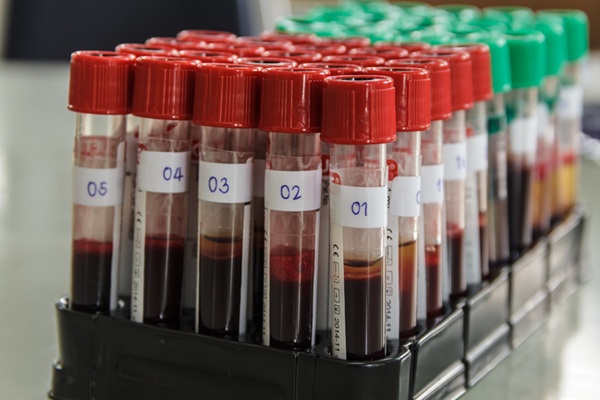
Dual Blood Biomarkers Improve ALS Diagnostic Accuracy
Diagnosing amyotrophic lateral sclerosis (ALS) remains difficult even with advanced imaging and genetic tools, especially when clinicians must distinguish it from other neurodegenerative conditions that... Read moreHematology
view channel
ADLM’s New Coagulation Testing Guidance to Improve Care for Patients on Blood Thinners
Direct oral anticoagulants (DOACs) are one of the most common types of blood thinners. Patients take them to prevent a host of complications that could arise from blood clotting, including stroke, deep... Read more
Viscoelastic Testing Could Improve Treatment of Maternal Hemorrhage
Postpartum hemorrhage, severe bleeding after childbirth, remains one of the leading causes of maternal mortality worldwide, yet many of these deaths are preventable. Standard care can be hindered by delays... Read more
Pioneering Model Measures Radiation Exposure in Blood for Precise Cancer Treatments
Scientists have long focused on protecting organs near tumors during radiotherapy, but blood — a vital, circulating tissue — has largely been excluded from dose calculations. Each blood cell passing through... Read moreImmunology
view channel
Chip Captures Cancer Cells from Blood to Help Select Right Breast Cancer Treatment
Ductal carcinoma in situ (DCIS) accounts for about a quarter of all breast cancer cases and generally carries a good prognosis. This non-invasive form of the disease may or may not become life-threatening.... Read more
Blood-Based Liquid Biopsy Model Analyzes Immunotherapy Effectiveness
Immunotherapy has revolutionized cancer care by harnessing the immune system to fight tumors, yet predicting who will benefit remains a major challenge. Many patients undergo costly and taxing treatment... Read moreMicrobiology
view channel
15-Minute Blood Test Diagnoses Life-Threatening Infections in Children
Distinguishing minor childhood illnesses from potentially life-threatening infections such as sepsis or meningitis remains a major challenge in emergency care. Traditional tests can take hours, leaving... Read more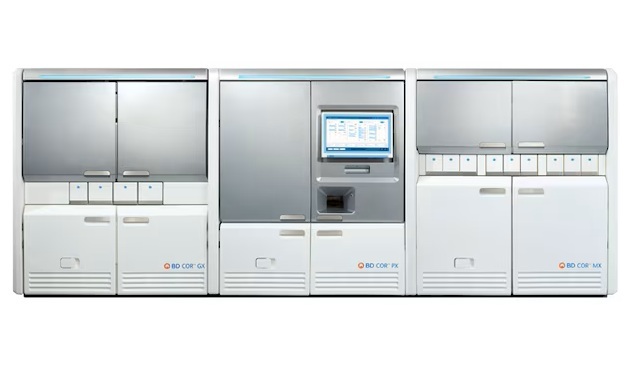
High-Throughput Enteric Panels Detect Multiple GI Bacterial Infections from Single Stool Swab Sample
Gastrointestinal (GI) infections are among the most common causes of illness worldwide, leading to over 1.7 million deaths annually and placing a heavy burden on healthcare systems. Conventional diagnostic... Read morePathology
view channel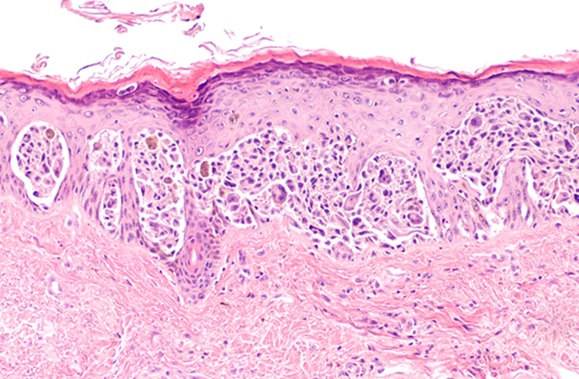
AI Tool Improves Accuracy of Skin Cancer Detection
Diagnosing melanoma accurately in people with darker skin remains a longstanding challenge. Many existing artificial intelligence (AI) tools detect skin cancer more reliably in lighter skin tones, often... Read more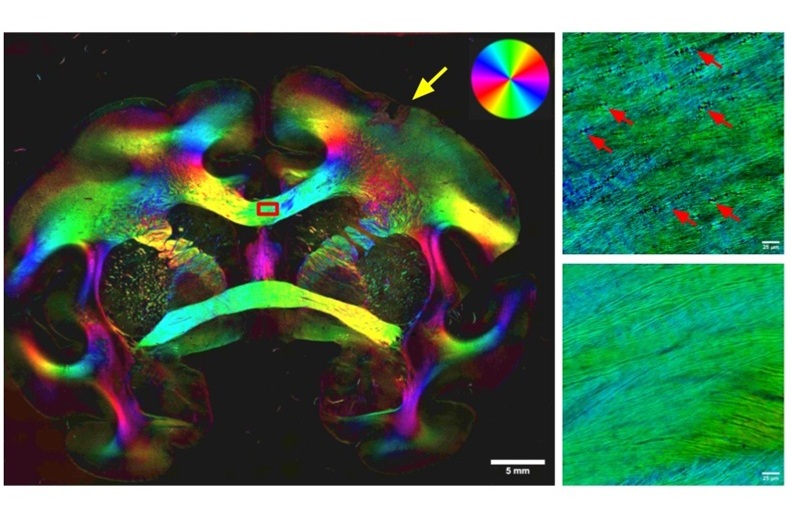
Highly Sensitive Imaging Technique Detects Myelin Damage
Damage to myelin—the insulating layer that helps brain cells function efficiently—is a hallmark of many neurodegenerative diseases, age-related decline, and traumatic injuries. However, studying this damage... Read moreTechnology
view channel
AI Model Achieves Breakthrough Accuracy in Ovarian Cancer Detection
Early diagnosis of ovarian cancer remains one of the toughest challenges in women’s health. Traditional tools such as the Risk of Ovarian Malignancy Algorithm (ROMA) can struggle to distinguish between... Read more
Portable Biosensor Diagnoses Psychiatric Disorders Using Saliva Samples
Early diagnosis of psychiatric disorders such as depression, schizophrenia, and bipolar disorder remains one of medicine’s most pressing challenges. Current diagnostic methods rely heavily on clinical... Read more
Cell-Sorting Device Uses Electromagnetic Levitation to Precisely Direct Cell Movement
Sorting different cell types—such as cancerous versus healthy or live versus dead cells—is a critical task in biology and medicine. However, conventional methods often require labeling, chemical exposure,... Read moreIndustry
view channel
Co-Diagnostics Forms New Business Unit to Develop AI-Powered Diagnostics
Co-Diagnostics, Inc. (Salt Lake City, UT, USA) has formed a new artificial intelligence (AI) business unit to integrate the company's existing and planned AI applications into its Co-Dx Primer Ai platform.... Read more













